Highlights and access methods of Tsurugaoka Hachimangu Shrine (Kanagawa Prefecture)
English | Japanese
Tsurugaoka Hachimangu Shrine was built by Minamoto no Yoriyoshi and dedicated to the present location by Minamoto no Yoritomo, the first shogun of the Kamakura Shogunate. It is characterized by its vermilion-lacquered shrine pavilions and the main shrine, which enshrines the Hachiman God, who presides over luck in victory and work. Within the precincts are Genji Pond and Heike Pond, which provide a beautiful scene of cherry blossoms and lotus flowers in bloom, depending on the season.
In this article, we will explain the attractions of Tsurugaoka Hachimangu Shrine in Kanagawa Prefecture and how to access it for those who are traveling to Japan from overseas.
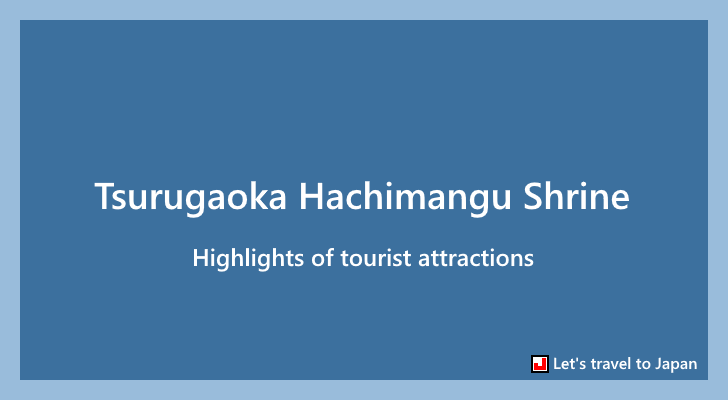
(Last modified: )
(Prefecture : Kanagawa , Category : Shrines)
Table of contents
Highlights of Tsurugaoka Hachimangu Shrine
Built in 1063 by Minamoto no Yoriyoshi, Tsurugaoka Hachimangu Shrine was respected as the clan deity of the Minamoto clan and was dedicated by Minamoto no Yoritomo, the first shogun of the Kamakura shogunate. The main shrine, with its distinctive vermilion-lacquered pavilions, was carved out of the mountainside and enshrines the Hachiman God, who presides over luck in victory and work, and attracts many worshippers. There is also a straight path of worship leading from Yuhiga-hama to Tsurugaoka Hachiman-gu Shrine with Ichino-torii, Ni-torii, and San-no-torii gates, the total length of which is 1.8 km.
The Tsurugaoka Hachimangu Shrine grounds feature an approach lined with beautiful cherry blossom trees in spring and two ponds, the Genji Pond and the Heike Pond. The ponds were created in 1182 by order of Minamoto no Yoritomo, and three and four islands were placed on each to represent the contrast between the Minamoto and Heike clans. The Genpei Ponds also offer a beautiful sight of cherry blossoms and lotus flowers in bloom, depending on the season.
The famous incident of Kamakura-dono Minamoto no Jitsunecho, which took place under the large ginkgo tree at Tsurugaoka Hachiman-gu Shrine, led to the subsequent collapse of the cooperative system between the Imperial Court and the Shogunate. In addition, a yabusame (horseback archery) ritual is held every year on September 16. This ritual is performed by students of the Ogasawara school of horseback archery, which is descended from the samurai class.
Tsuruoka Hachimangu Shrine has many power spots. The Masako Stone is believed to have mystical powers of matchmaking, fertility, and safe delivery. The sacred tree, a large ginkgo tree, is believed to be 1,000 years old and is designated as a natural monument of the prefecture. Unfortunately, it was toppled by strong winds, but it has since regenerated, and its vitality and regenerative powers are depicted on an ema (votive tablet). When you visit Tsurugaoka Hachimangu Shrine, be sure to visit these power spots as well.
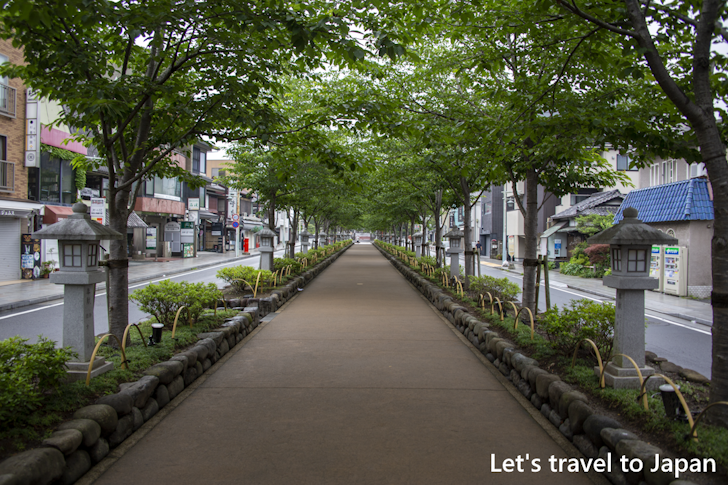
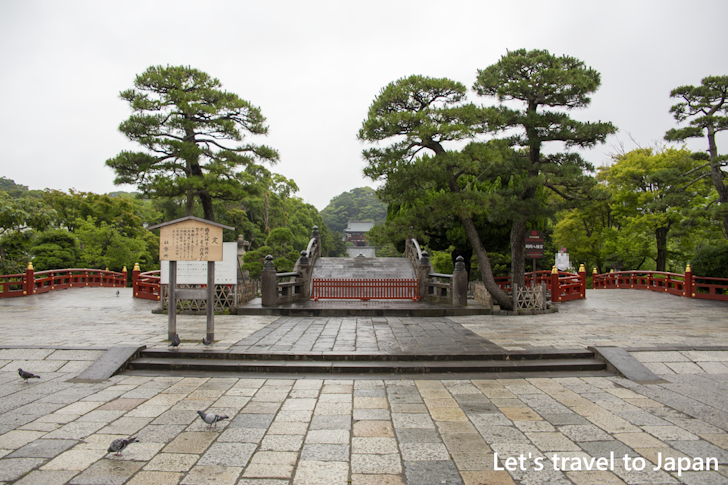
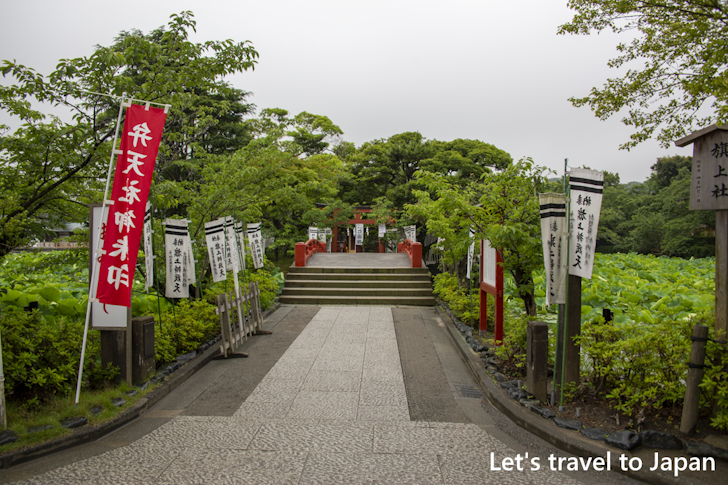
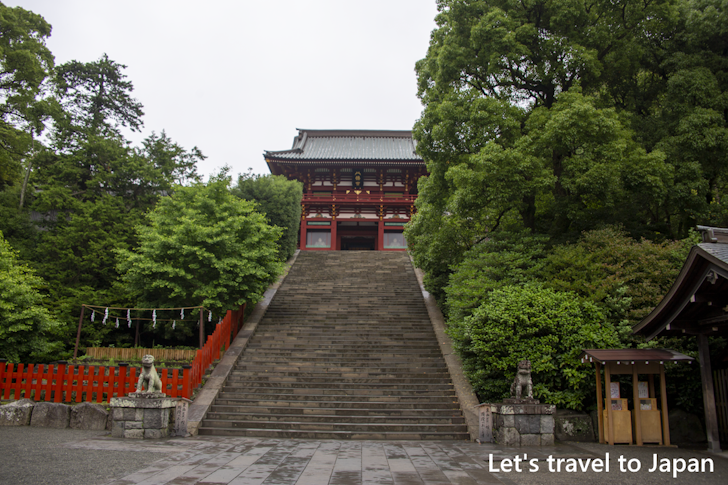
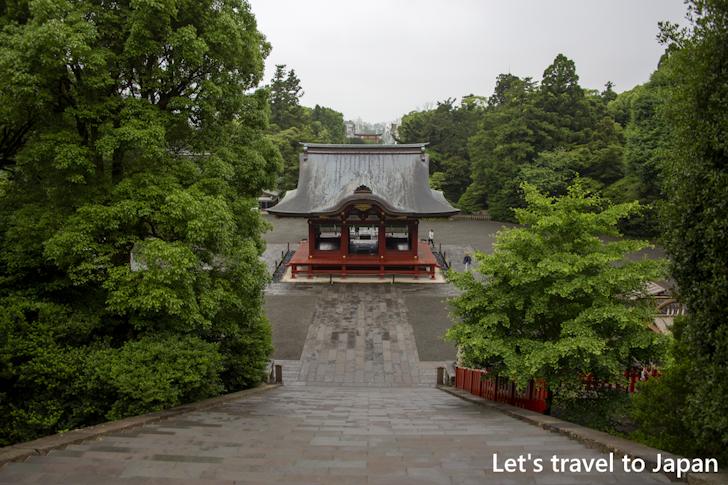
Address and access method of Tsurugaoka Hachimangu Shrine
The address of Tsurugaoka Hachimangu Shrine is "2-1-31 Yukinoshita, Kamakura City, Kanagawa Prefecture". The nearest station is Kamakura Station on the JR Yokosuka Line. It's about a 10 minute walk from the station. Or Enoshima Electric Railway Enoden Kamakura Station. It's about a 10 minute walk from the station.
Attractions near Tsurugaoka Hachimangu Shrine
Several notable attractions are located near Tsurugaoka Hachimangu Shrine:
The Great Buddha of Kamakura
This colossal outdoor bronze statue of Amida Buddha is a symbol of Kamakura and one of the most iconic landmarks in Japan. Dating back to 1252, it is a designated National Treasure of Japan.
Komachi Street
Located near Kamakura Station, this bustling shopping street is filled with unique boutiques, souvenir shops, cafes, and restaurants. A perfect place to enjoy local delicacies or shop for traditional crafts.
Hasedera Temple
Known for its massive wooden statue of Kannon, the goddess of mercy, this beautiful temple also offers a stunning view over Kamakura city from its grounds. The temple's hydrangea pathway is a must-see in June when the flowers bloom.
Kamakura Museum of Literature
Housed in a former villa, this museum exhibits the works of authors related to Kamakura and offers a charming Western-style garden. A pleasant spot to relax and enjoy the literary history of the city.
Other information about Tsurugaoka Hachimangu Shrine
Official site about Tsurugaoka Hachimangu Shrine :
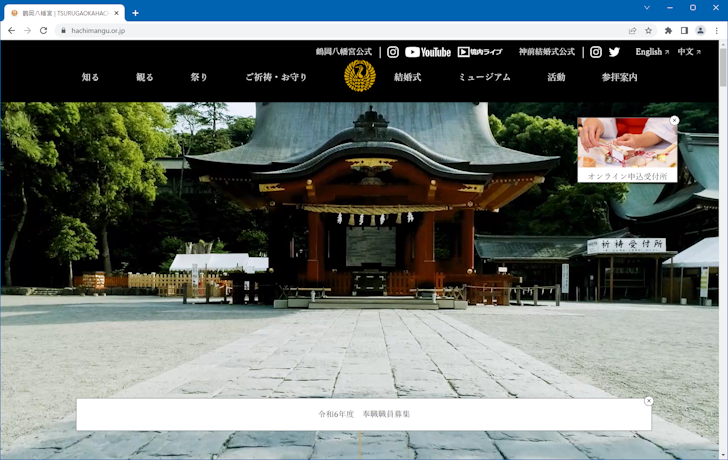
-- --
Thank you for reading to the end.
( Written by Tatsuo Ikura )